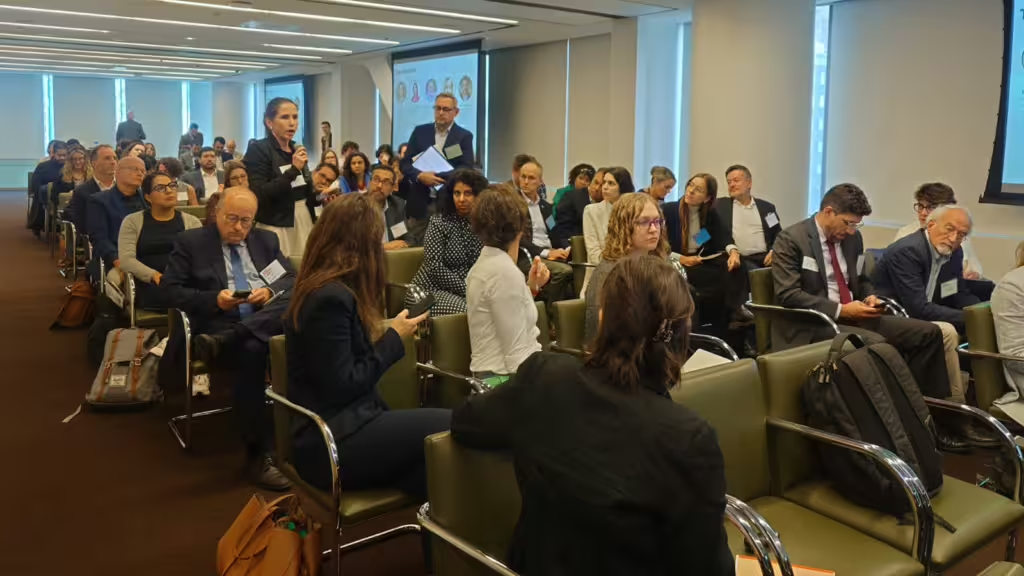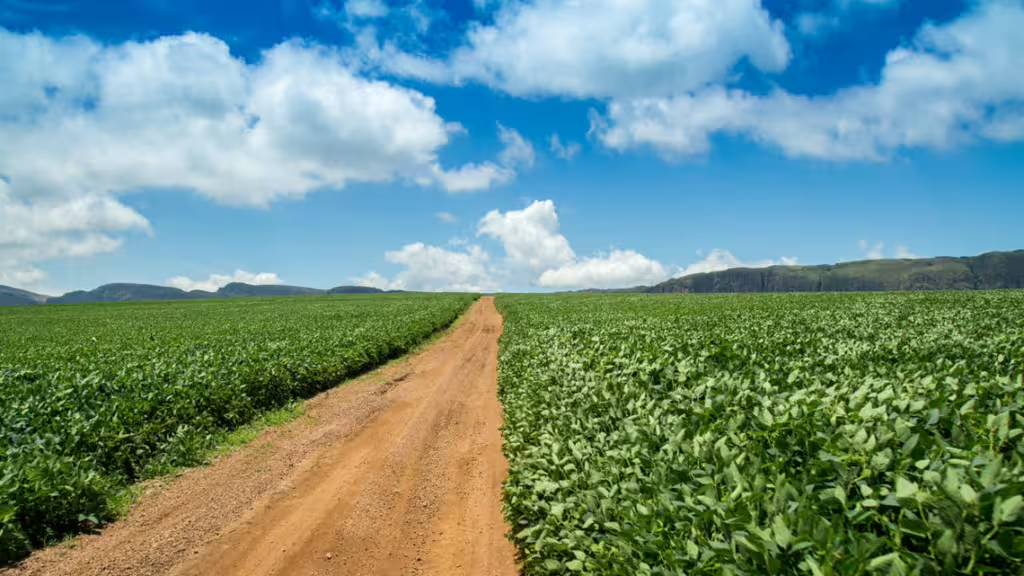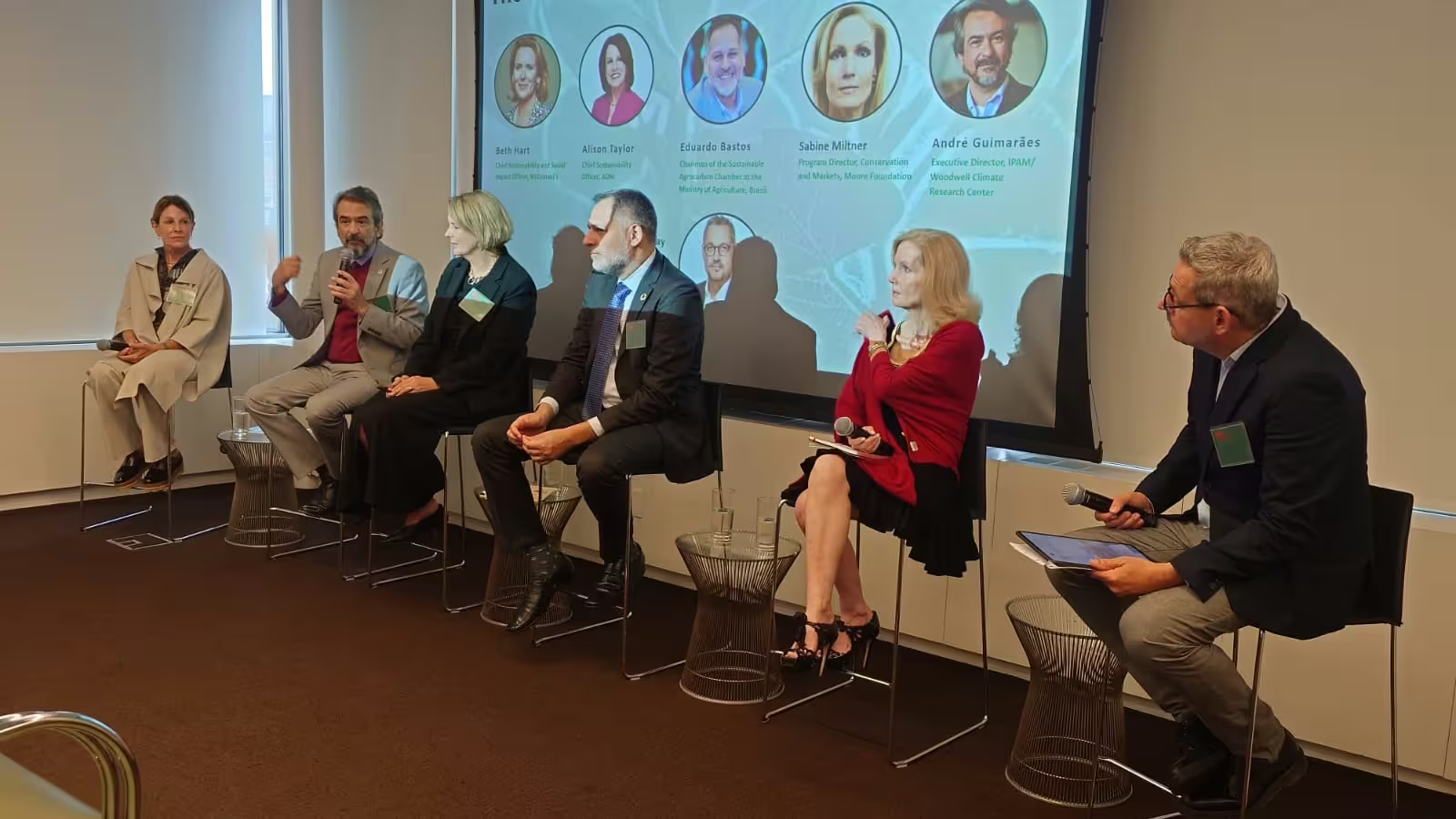“The science is undeniable: shifting to responsible land use and land management practices, including deforestation- and conversion-free (DCF) commodity production, is key to achieving the balance between production and conservation in Brazil’s crucial Cerrado region.” This was the insistent message from keynote speaker André Guimarães from Brazil’s IPAM, addressing stakeholders at the Sustainable Landscapes Partnership event at Climate Week New York (NYCW) 2024. Industry leaders came together to share the progress of their collaboration in implementing landscape-level strategies that integrate economic, environmental and social goals. Their goal was to reconcile agricultural production with environmental protection, delivering gains for climate, nature and people.
Through the Sustainable Landscapes Partnership, facilitated by the World Business Council for Sustainable Development’s Soft Commodities Forum (SCF) and the Consumer Goods Forum’s Forest Positive Coalition of Action (CGF FPC), with support from Proforest, USD $5.2 million has been invested to incentivize farmers and support the emergence of forest positive and resilient production regions. The Partnership’s results to date can be found here.
During the panel discussion at NYCW, co-organized with the Tropical Forest Alliance, panelists emphasized the conditions that need to be met for the successful forest-positive and resilient landscape initiatives to scale up. They all outlined the need for collaboration. “No one company can do it on its own,” said Alison Taylor, Chief Sustainability Officer at ADM, stressing the importance of collaboration across the entire supply chain. Taylor’s call was echoed by Beth Hart, Chief Sustainability & Social Impact Officer at McDonald’s, who noted that aligning business values with resilient production creates a “competitive advantage,” addressing growing consumer and investor expectations.
However, more catalytic financing is needed to shift toward sustainable production at scale. “What we’re seeing with financial commitments to innovative instruments is that making the money flow isn’t as straightforward as expected. More risk-sharing mechanisms are needed,” said Sabine Miltner, Program Director for Conservation and Markets at the Moore Foundation.

Beyond the role that private capital can play, public sector involvement is also crucial. Eduardo Bastos, Chairman of the Sustainable Agrocarbon Chamber at Brazil’s Ministry of Agriculture, highlighted the vital role of public-private partnerships in addressing the scale of investment required. “There is still a vast funding gap to finance the recovery of degraded areas at scale, a key solution to combining food security with forest preservation – one that won’t be filled by governments alone,” Bastos said, calling for greater investment from private and public sources alike.
The Partnership’s model is already producing tangible results with more than 600 farms engaged, almost 19,000 hectares (ha) of natural ecosystems under restoration or additional protection and half a million ha of DCF commodity production. The example of Western Mato Grosso is demonstrating long-term plans and local governance models which can serve as a model for other regions. Such scaling up will rely on financial risk-sharing mechanisms, governance structures and appropriate policies to prove that agricultural production and environmental protection can go hand in hand.
Ultimately, the Cerrado’s future depends on a diverse range of stakeholders coming together to co-invest in sustainable landscape-level solutions. As Taylor put it: “By scaling up investment in the Sustainable Landscapes Partnership, we can build a forest-positive future for the Cerrado – one that benefits both people and the planet.”
The Cerrado has close to 100 million ha of intact natural habitat, one quarter of which are within privately owned properties that could legally be cleared and are suitable for soy production. Without proper incentives for preservation, the opportunity cost remains high for producers seeking immediate financial gains. Initiatives such as the Sustainable Landscapes Partnership demonstrate that protection and production are interdependent and can be reconciled. With the right incentives, significant progress can be made in farmer engagement, conservation, restoration and DCF production.
The Sustainable Landscapes Partnership welcomes interest from new partners to support this landscape approach. Please reach out to Debora Dias (d.dias@theconsumergoodsforum.com) or Lucie Smith (scf@wbcsd.org) for more information on how to get involved.
Related
Content

Scaling Impact: The Soft Commodities Forum Expands its Scope to the Entire Cerrado
18 June, 2024

Producer Perspectives: Striving for Financial and Environmental Balance in the Western Mato Grosso Cerrado
18 June, 2024

Soft Commodities Forum: Delivering Action in the Cerrado
3 April, 2024

